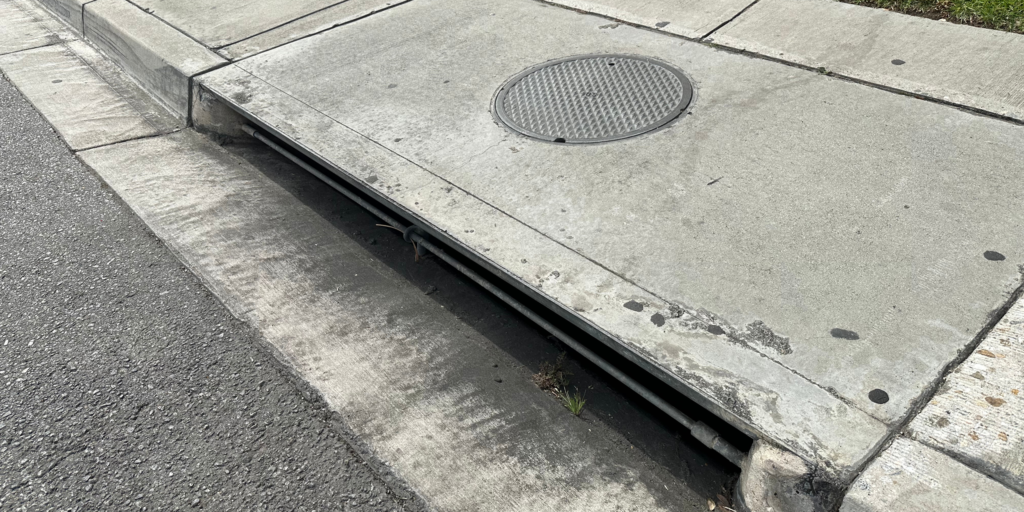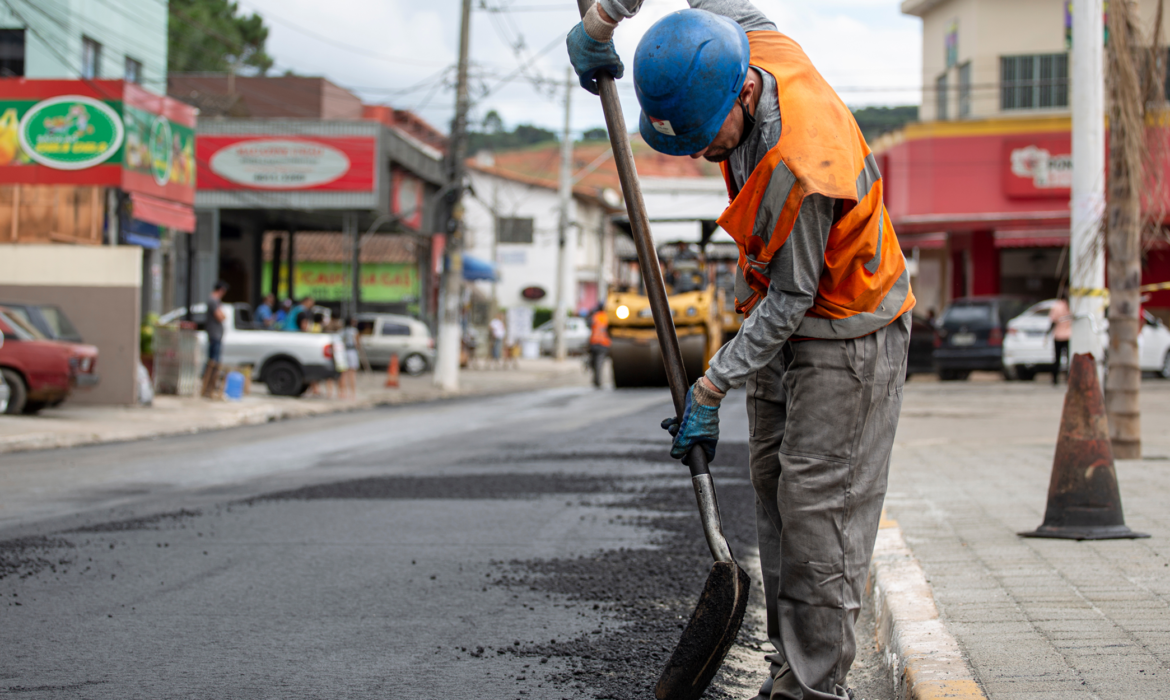As a homeowner, business owner, or road and parking lot user, you’ve probably seen asphalt pavement. It’s a popular surfacing option due to its durability and affordability. Like any material, it has flaws.
We will discuss eight common asphalt pavement issues and offer practical solutions. We cover cracks, potholes, fading, and drainage. Let’s begin learning how to keep your asphalt smooth and pristine for years!
Common Issues with Asphalt Pavement
Asphalt is popular for roads, driveways, and parking lots due to its durability and affordability. It can develop issues over time, like any surface exposed to constant wear and tear. Let’s examine some common asphalt pavement issues.
Cracks and potholes are common. Heavy traffic, temperature changes, and poor maintenance can cause these. Cracks damage pavement and interfere with its appearance if left untreated.
Discoloration and fading are common issues. Asphalt can fade due to sunlight, harsh weather, and vehicle chemicals.

Poor drainage is another asphalt pavement issue. Water that doesn’t drain off the surface can seep into cracks and weaken the foundation. This causes issues like potholes and uneven surfaces.
Another asphalt pavement issue is unevenness and rutting. Over time, heavy loads or improper construction can cause surface depressions or ruts.
Aging and deterioration affect all paved surfaces, including asphalt. Over time, exposure to various elements causes wear and tear, resulting in a rougher texture and lower performance.
These issues may seem daunting, but there are ways to maintain and repair asphalt pavement. Regular professional inspections help identify issues before they become irreparable.
Cracks and Potholes
Cracks and potholes are common asphalt pavement issues. These unsightly blemishes detract from your property’s appearance and can endanger pedestrians and vehicles. Pavement cracks can result from age, weather, traffic, or improper installation. These cracks can widen and let water into the pavement layers, causing more damage.
However, potholes form when moisture penetrates pavement cracks and weakens it. The weight and pressure of passing vehicles break asphalt, creating these dangerous holes.
You must act quickly to fix asphalt pavement cracks. Many cracks are sealed with specialized materials to prevent water infiltration and further deterioration.
Patching larger cracks or potholes may be needed. This involves removing damaged pavement and filling it with new asphalt or repair material. Proper compaction creates a smooth, crack-resistant surface.
Prevention is better than cure for asphalt pavement maintenance. Sealcoating protects against UV rays, oil spills, and other damage and extends surface life.
You can keep your asphalt pavement safe and attractive by promptly sealing or patching cracks and potholes.
Fading and Discoloration
Asphalt pavement often fades and discolors. Sunlight, harsh weather, and heavy traffic can fade the surface. An important cause of fading is oxidation. UV rays from the sun break down pavement binders as asphalt ages. This causes color loss and a grayish appearance.
Asphalt pavement needs regular maintenance to prevent fading. Sealcoating effectively blocks UV rays and prevents further damage. A fresh new look also improves the overall appearance. Addressing these issues quickly and maintaining your asphalt pavement with sealcoating and cleaning can extend its lifespan and keep it looking great for years!
Drainage Problems
Asphalt pavement can suffer from drainage issues. Poor drainage and water accumulation can cause erosion, cracking, and potholes. To preserve the pavement, these issues must be addressed immediately.
Standing water on asphalt is a common drainage issue. Poor slope or drainage can cause this. Water weakens pavement and accelerates deterioration.
Poor subgrade drainage is another issue. Poor soil drainage can allow moisture to seep into pavement layers, weakening and failing them. Uneven surfaces and structural damage can result.

Clogged or damaged drains can worsen drainage issues. Debris in drains or damaged pipes prevents water from flowing away from pavement, causing pooling and damage.
Several solutions exist for asphalt pavement drainage issues. Proper grading during installation ensures water runoff slope. Installing catch basins and pipes will help drain water from the pavement.
Uneven Surfaces and Rutting
Uneven surfaces and rutting are common asphalt pavement issues. Uneven pavement heights make driving unpleasant. Rutting is traffic-induced depressions or grooves in wheel paths.
Poor construction, poorly compacted installation, heavy traffic, and poor maintenance can cause uneven surfaces and rutting. Without immediate action, these issues can worsen.
Proper asphalt pavement maintenance can fix these issues. Regular inspections should detect unevenness and rutting early. Milling or patching should be done immediately to smooth the surface. Ensure a smoother ride for vehicles and pedestrians while extending pavement life.
Aging and Deterioration
Although durable, asphalt pavement deteriorates over time. UV rays, moisture, and heavy traffic can deteriorate asphalt. Pavement cracks indicate aging. Water seeps into the subbase through these cracks, causing structural damage. Asphalt cracks, brittleness, and color fade may be present.
Potholes are another problem with aging asphalt. Water freezes in cracks and forms potholes in winter. The pavement weakens and breaks apart due to freezing expansion and contraction.
Preventing these signs of aging and deterioration requires regular maintenance. Sealcoating protects against UV rays and fills minor cracks before they worsen. Regular inspections will detect issues early for quick repairs.
Solutions for Maintaining and Repairing Asphalt Pavement
Maintenance and repair are essential for asphalt pavement’s longevity and functionality. Here are some effective solutions for common issues:
Preventing major issues requires regular maintenance. This includes regular inspections, debris cleanup, and crack filling.
Sealcoating: Sealcoating pavement protects it from moisture, UV rays, and traffic wear. It prolongs asphalt life.
Crack sealing: Water can penetrate cracks and cause more damage. Specialized materials are used to seal cracks to prevent moisture infiltration.
Pothole Repair: Potholes are dangerous and degrade pavement. Remove damaged potholes and replace them with new asphalt or cold patch material.
Resurfacing or overlay: If your asphalt is severely cracked or deteriorated, resurfacing may be needed. A new layer of asphalt is applied over the old one to strengthen and durability.
Reconstruction: Aging or severe damage may require reconstruction. Before installing new asphalt, the old pavement must be removed, and a new base built.
Proper Drainage Systems: Fixing drainage issues prevents standing water from causing erosion and damage. Installing French drains or catch basins can divert water from the pavement.
Professional Assistance: Hiring asphalt paving experts ensures you get customized advice. Their knowledge, skills, equipment, and resources enable effective maintenance and repairs.
Implementing these solutions proactively can preserve your asphalt pavement and reduce future issues!

